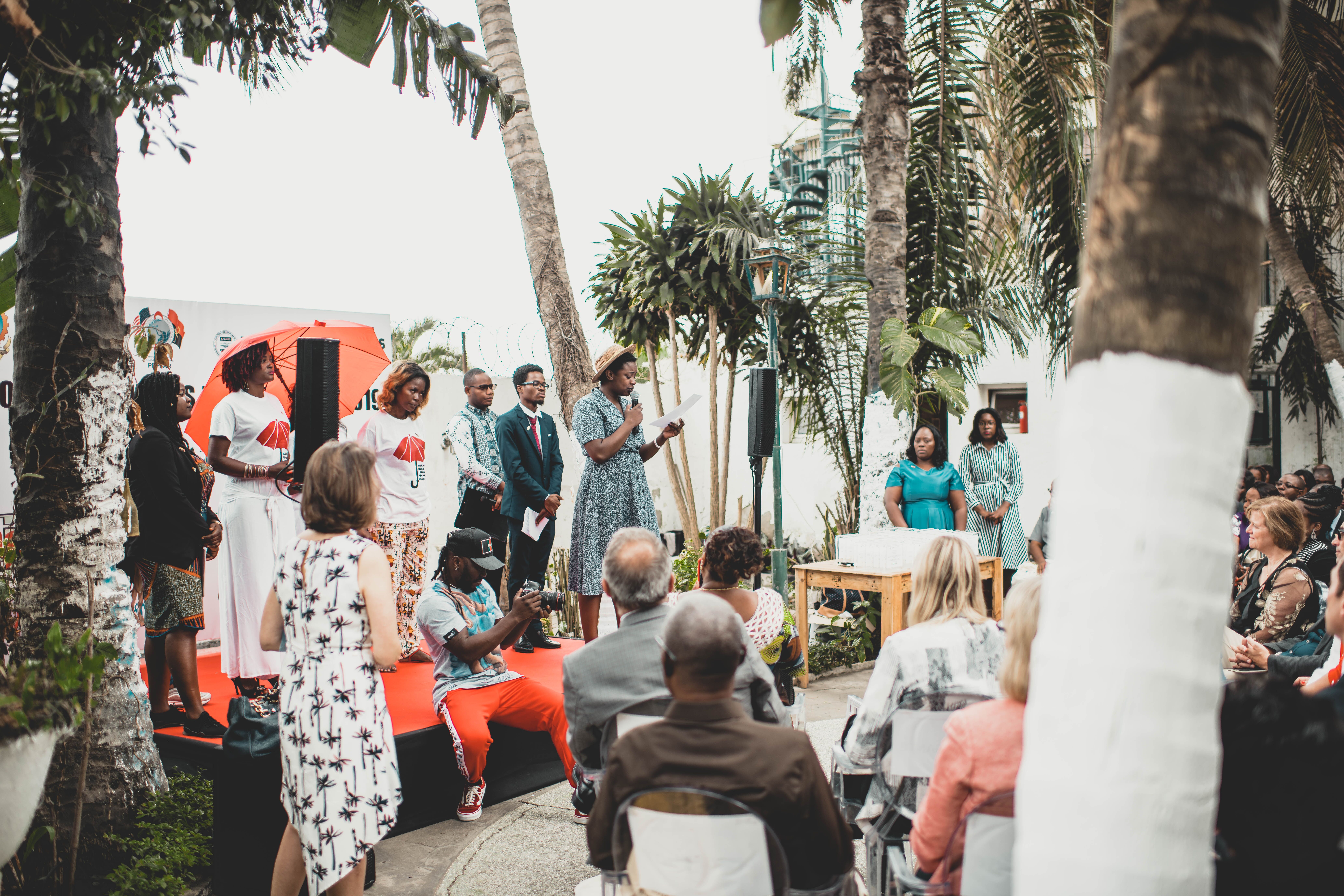Aubrey Weber, Technical Officer, FHI 360
Rose Wilcher, Director, Knowledge Management, LINKAGES

LINKAGES Angola’s close-out ceremony
As we near the end of 2019, it is only natural to look back on the year in review. Or, in this case, the past five years. Nine LINKAGES country programs are successfully concluding this year having achieved amazing results during multiyear efforts to address the HIV epidemic among key populations. We recognize the tremendous performance of the country staff and local partners who led these programs and reflect on the cumulative impact of the project on each country’s epidemic. Some highlights include:
Angola
LINKAGES Angola reached and connected female sex workers, men who have sex with men, and transgender women to HIV prevention, care, and treatment services by developing distinct, tailored interventions that met the needs and preferences for each key population group. Female sex worker peer educators were trained to provide HIV testing and counseling; the enhanced peer outreach approach and online outreach were used successfully to reach and identify men who have sex with men living with HIV; and a trans woman activist started monthly gatherings at a community center where two nurses provided prevention and testing services to trans women.
Botswana
The LINKAGES Botswana team supported the Government of Botswana in introducing pre-exposure prophylaxis (PrEP) and initiated more than 500 key population individuals on PrEP in the final year of the project. They also successfully introduced the enhanced peer outreach approach, index testing, and peer navigation, which led to substantial increases in case finding and antiretroviral therapy (ART) linkage rates over the life of project.
Burundi
LINKAGES Burundi created three drop-in centers to provide female sex workers with HIV testing, sexually transmitted infection diagnosis, and ART services and strengthened an existing drop-in center to serve men who have sex with men and transgender people. The Burundi team found case-finding success through index testing and HIV self-testing, and achieved a 90% linkage to ART rate over the life of the project and 97% in the last year.
Cote d’Ivoire
LINKAGES Cote d’Ivoire successfully implemented index testing and the enhanced peer outreach approach with men who have sex with men and female sex workers, leading the government to adopt these case-finding strategies as national approaches. The Cote d’Ivoire team also equipped health care providers and police officers to reduce stigma and discrimination and prevent and respond to sexual and gender-based violence.
India
LINKAGES India not only introduced and scaled new and impactful ways of reaching previously unreached key population individuals and engaging them in HIV services, but also transferred the approaches to the Government of India and integrated them into national HIV guidelines. One of the LINKAGES India team’s notable achievements was its introduction of Yes4Me, a cutting-edge online platform through which virtual outreach workers successfully engaged high-risk individuals and connected them to HIV testing services, producing a case-finding rate of 5.5%.
Kenya
LINKAGES Kenya developed several key population program monitoring tools that were later adopted by the Ministry of Health, including unique identifier codes and the people living with HIV (PLHIV) tracker. They engaged county health management teams in ensuring drop-in centers met accreditation criteria to provide ART, which led to improved treatment initiation and retention among men who have sex with men and female sex workers. The Kenya team was a pioneer in building the capacity of civil society organization implementing partners and preparing them to receive direct funding.
Malawi
The LINKAGES Malawi team newly diagnosed more than 7,200 individuals living with HIV and initiated nearly 90% of them on treatment. LINKAGES’ package of services for key populations was adopted by the National AIDS Commission as the standard key population service package and was integrated into the national HIV prevention strategy.
Mali
LINKAGES Mali demonstrated that strategies such as the enhanced peer outreach approach, risk segmentation, index testing and risk network referral, peer navigation, and online outreach offered impactful ways to engage previously unreached key population individuals and link them to high-quality HIV services. The team also increased viral load monitoring of key population individuals living with HIV by introducing the use of dried blood spot samples for viral load testing and strengthening collaboration among staff at the community, government health facility, and national referral laboratory levels.
Sri Lanka
The focus of LINKAGES Sri Lanka was on improving the coverage and uptake of high-quality HIV prevention and testing services among female sex workers, men who have sex with men, transgender people, and people who use or inject drugs. The team did so through a package of strategies that included engaging private providers, using the enhanced peer outreach approach and online approaches to enhance case finding, developing social and behavior change communication materials that focused on the whole person rather than only sexual behavior, and introducing client feedback systems and a National Key Population Program Monitoring Dashboard to guide program improvement.
Click on the country summary reports to read more about LINKAGES’ program innovations and community-led approaches, what worked in each country to reach key populations and engage them in services across the cascade, how LINKAGES contributed to policy changes that favor key populations and strengthened local partner capacity, and the legacy that LINKAGES leaves as these countries continue to pursue epidemic control.
